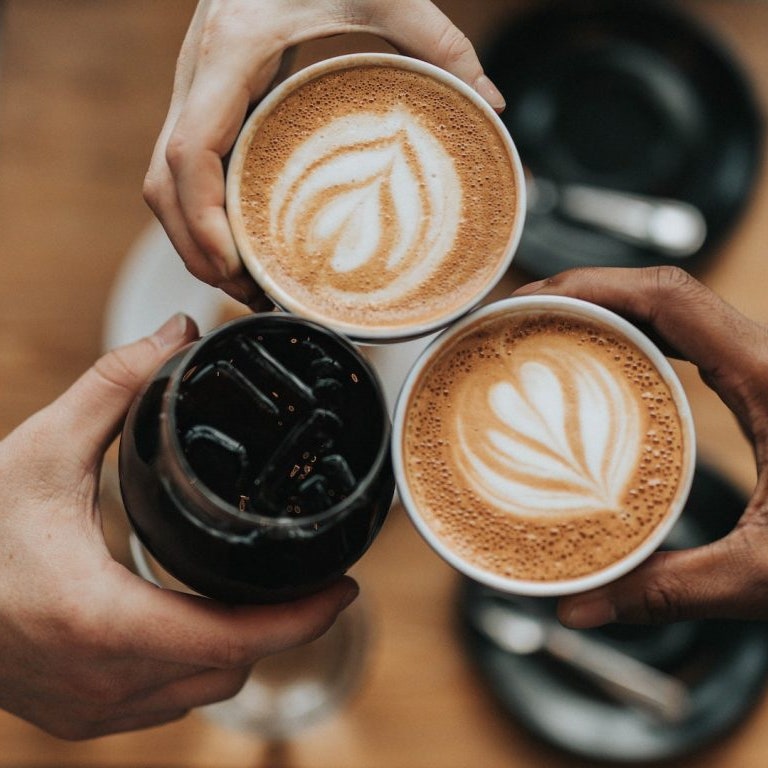What are the trading modes of coffee beans? How to do a fair trade auction of raw coffee beans? Direct trade?
James Hoffman writes in his book that coffee trade is mainly divided into four modes: partnership coffee, direct trade, fair trading model, and auction coffee.

The specific differences between these four modes of coffee trading can actually be known through their names, but Qianjie is here to learn about the details of these patterns.
Partnership Coffee:
It means that coffee roasters buy coffee directly from small-scale coffee farmers and maintain a long-term trading relationship with producers. Small farmers' organizations have never been prompted to import high-quality organic raw coffee and long-term relationships have been established and fair and just trade practices have been promoted. The goal is to make coffee cultivation a sustainable and beneficial effort for farmers' families and communities.
Cooperative Coffee is dedicated to:
Booming import business-in the eyes of our trading partners, our terms of trade are the best choice, and our business practices are defined, documented and disseminated as a model for the coffee industry.
Prosperous communities-We understand the basic needs of our trading partners and promote access to specific expertise to help smallholder farmers increase their productive capacity and meet their basic needs. We measure not only the economic impact of our relationship, but also the overall quality of life of our partners and their communities.
Fair sale of coffee:
The structure of coffee trade in North America, Western Europe and Japan is very similar. Coffee is usually purchased by international trading companies, distributors and traders from exporting countries. Europe's largest roasters also have their own internal procurement companies that deal directly with the country of origin. In general, however, roasters tend to buy coffee from international trading companies or professional import agents representing specific exporters in the producing country. International trade plays a vital role in the global marketing and distribution of coffee.
Direct trade:
Coffee roasters communicate directly with coffee producers, not through the direct relationship of importers. Contact the manufacturer directly and ask for samples of raw coffee beans. Of course, there are real-world opportunities to make connections, such as local cup testing, auctions, or events created specifically to connect bakers and producers. It is worth noting that many roasters want to provide a range of coffee from different places. It's impossible to work with only one producer. Therefore, it is best to use a direct trade relationship as part of a procurement strategy rather than using it to meet all your needs.
Auction coffee:
The boutique coffee auction is an excellent forum for promoting high-quality coffee. They also promote direct relationships between producers and buyers and usually ensure that farmers receive good harvest prices. Coffee auctions have been used for centuries and are still a popular way to trade raw coffee beans. They are also sometimes used to display high-quality coffee. In Latin America, auctions are most commonly used to sell boutique coffee. In most African countries, auctions are run by governments and are the main way of trading commercial coffee. But in recent years, some professional auctions have also taken place in Africa. For example, in 2020, COE came and brought it to Ethiopia.
Important Notice :
前街咖啡 FrontStreet Coffee has moved to new addredd:
FrontStreet Coffee Address: 315,Donghua East Road,GuangZhou
Tel:020 38364473
- Prev

Top five Coffee beans Certification UTZ Fair Trade Bird friendly Certification Clifton Manor Rain Forest recognition
Coffee certification is everywhere in grocery stores, restaurants, and even offices! Today's consumers have the right to know whether their coffee beans are certified, which provides consumers with a variety of third-party guarantees. They can demonstrate environmentally friendly agricultural practices and can achieve organic certification all the time. They can ensure that child labor is not involved in the production of coffee. Some plans are more focused.
- Next

Traditional Kenyan coffee bean processing methods flavor Kenyan Kiambu coffee growers team story
Grower groups such as Ngewa-Komothai help quality-conscious small owners maintain quality and traceability standards while entering the international market
Related
- Detailed explanation of Jadeite planting Land in Panamanian Jadeite Manor introduction to the grading system of Jadeite competitive bidding, Red bid, Green bid and Rose Summer
- Story of Coffee planting in Brenka region of Costa Rica Stonehenge Manor anaerobic heavy honey treatment of flavor mouth
- What's on the barrel of Blue Mountain Coffee beans?
- Can American coffee also pull flowers? How to use hot American style to pull out a good-looking pattern?
- Can you make a cold extract with coffee beans? What is the right proportion for cold-extracted coffee formula?
- Indonesian PWN Gold Mandrine Coffee Origin Features Flavor How to Chong? Mandolin coffee is American.
- A brief introduction to the flavor characteristics of Brazilian yellow bourbon coffee beans
- What is the effect of different water quality on the flavor of cold-extracted coffee? What kind of water is best for brewing coffee?
- Why do you think of Rose Summer whenever you mention Panamanian coffee?
- Introduction to the characteristics of authentic blue mountain coffee bean producing areas? What is the CIB Coffee Authority in Jamaica?

